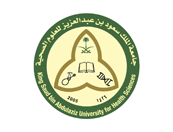Abstract
Background: A medical neuroscience curriculum that integrates broad categorization of neurological diseases in the first year of medical education has a functional utility to strengthen the foundation of medical students in clinical neuroscience. Students– patients interactive activities could provide an understanding of core curricula for basic neuroscience and clinical neurology. Methods: Twelve neurological patients, with varying neurological diseases, volunteered to share their medical experiences with small groups of students in a 30-minute session. A debriefing segment with clinical and biomedical science faculty and students followed these sessions. Two structured student surveys – a pre and posttests were administered. Results: 98.5% of students agreed (85.5% of these students strongly agreed) that patient integration into the first-year neuroscience module provided real-life experiences that were helpful in their understanding of clinical neuroscience. 95.6% of students agreed that their ability to interact with a diverse group of neurological patients was improved. Prior to the students– patients interactive session, only 91.1% of students agreed (52.6% of these students strongly agreed) that patient integration would be beneficial in their understanding of clinical neuroscience. Discussion: The integration of patients into the neuroscience module provides better understanding of clinical concepts in neuroscience. It facilitates a meaningful discussions, stimulated critical thinking in neuroscience, and increased students' insights into patient–physician relationships, even at year one in the medical school, with significant real-life experiences.
Recommended Citation
(2018)
"Integration of Patients into First-year Neuroscience Medical Curriculum,"
Health Professions Education: Vol. 4:
Iss.
1, Article 9.
DOI: 10.1016/j.hpe.2017.02.001
Available at:
https://hpe.researchcommons.org/journal/vol4/iss1/9



